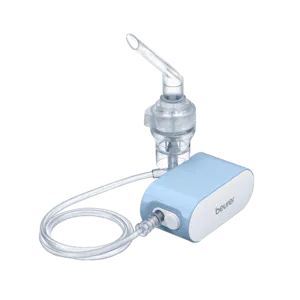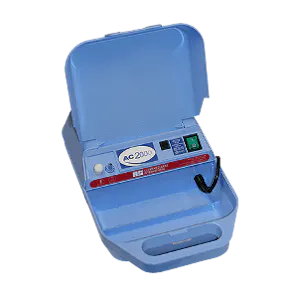Even indoors you could be at risk from air pollution
Recently there has been a lot of publicity given to outdoor air pollution and many associations such as The British Lung Foundation and Asthma UK have been campaigning hard to see a reduction in pollution so that we all can breathe clean air.

There's no hiding from air pollution
Did you know that indoor air pollution can be just as toxic and dangerous for our health? Usually indoor air quality problems only cause discomfort and most people feel better as soon as they remove the source of the pollution. The World Health Organisation, however, state that “indoor air pollution can lead to a wide range of child and adult diseases, including acute and chronic respiratory conditions (e.g. pneumonia, chronic obstructive pulmonary disease), lung cancer, ischemic heart disease, stroke and cataract. There is also supporting evidence suggesting exposure to household air pollution is linked with adverse pregnancy outcomes, tuberculosis, upper aero-digestive tract, cervical and other cancers.”
If you’ve been closed in at home all winter and you find yourself more short of breath than normal, suffering from a sore throat, itchy eyes, coughing more or wheezing maybe the air in your home is polluted. Or if your symptoms include itchy and runny eyes, a runny nose and inflamed, swollen sinuses you could have developed an allergy. If you have COPD, asthma or another existing lung condition these triggers can make your symptoms worse.
Indoor Air Pollutants can be caused by mold and pollen, dust, animal dander, particles generated by stoves or log burners, tobacco smoke, household products, pesticides, gases such as radon or carbon monoxide and some materials used in building such as asbestos, formaldehyde and lead. If you have COPD or another long-term lung condition you are more likely to be affected by poor air quality. You are also more likely to spend more time at home so it important to reduce and remove as many of these pollutants as possible.
Helping Yourself
Condensation and damp
With effective insulation and double glazing many houses are now tightly sealed causing pollutants to settle. Its important to keep your home well aired. Open windows several times a day especially when cooking or showering, dry your washing outside, in a utility room or a dryer, wipe wet windowsills and use extractor fans. These actions will all help prevent condensation and damp. Condensation and damp encourage mounds to grow, if you see any remove it immediately as allergies to moulds are very common. Another fungus often found indoors is called aspergillus. It usually grows on dust and powdery food items like flour. It can cause a wide range of conditions, from mild irritation of your airways to more serious infections in people who already have a lung condition.
Smoking
Tobacco smoke contains over 5,000 chemicals, including tar and nicotine. Smokers smoke for the nicotine but are harmed by the tar. We know that more than 70 of these chemicals cause cancer. Others are poisonous. When you smoke, these chemicals go straight into your lungs and through them to the rest of your body. Inhaling any type of smoke is harmful. If anyone smokes in your home, tiny particles from tobacco smoke can drift all through your house. These particles can remain at harmful levels for up to five hours. Don’t smoke or allow anyone else to smoke in your home. If you do smoke then smoke outside and close the door behind you and if you do smoke the the best thing you can do is stop.
Cookers, heaters, stoves and open fires can all release pollutants into your home.
It’s important that these appliances are well ventilated with a clean flue, chimney or vent allowing air in to dilute these pollutants. Burning wood and coal in a stove or on an open fire releases particle matter. This can irritate your nose and throat, giving you a cough or breathing problems. It can also make the symptoms of people living with asthma or COPD worse. It is a known cause of early deaths from lung and heart disease. In the long term, your risk of getting lung cancer is increased from burning coal or wood.
Carbon Monoxide
Carbon monoxide is created when fuels like gas, oil, coal or wood don’t burn fully. It’s important to make sure cooking and heating appliances are all well ventilated and serviced regularly by a qualified technician. Make sure that vents and chimneys are not blocked. Install alarms for smoke and carbon monoxide - these are separate alarms and check the batteries regularly.
Carbon monoxide poisoning can kill. If you have mild carbon monoxide poisoning, the first symptom you might notice is a headache. You might also notice flu-like symptoms, but without the temperature. If several people in one building develop flu-like symptoms without a temperature, then it could be due to a carbon monoxide leak – so act immediately.
Cleaning products
A wide range of cleaning products we use today contain chemicals that can cause an allergic reaction or increase irritation. Recently research has suggested that regular exposure to cleaning products significantly affects lung function. It found that chemicals in cleaning products irritate the mucus membranes that line the airways of the lungs causing long-term damage. These chemicals can be found in detergents, furniture polish, air fresheners, carpet cleaners, oven cleaners, pesticides and fungicides, paints and paint strippers, varnishes and glues. It would be wise to think of ways of avoiding these products or keeping their use to a minimum. Consider damp dusting with a microfiber cloth and water which is more than enough for most purposes. Use products which are labelled allergy friendly, avoid sprays and always open windows when cleaning or decorating.
Dust and Dander
If you’re allergic to things in your home, you’re likely to get a runny or blocked nose, itchy, red or watering eyes and wheezing. If you have asthma, your symptoms are likely to get worse. Some people can develop these allergies over time and allergies to dust and pet dander are common. Everyone has dust mites in their home and if you can’t face rehoming your pet then here’s a few tips which may help. As well as airing your home you should try damp dusting, changing your mattresses and bedding regularly, washing it at 60°C. Regularly vacuuming your mattress and pillows. You can buy special barrier covers for your mattresses, duvets and pillows. If possible vacuum soft furnishings twice a week, and don’t forget to vacuum under your bed, where dust mites gather. Clean all carpets and hard floors with a high filtration vacuum cleaner daily if you can and next time you decide to decorate why not choose smooth floors, such as wood, laminate, bamboo or lino instead. Keep pets out of the bedrooms and if it lives in a cage why not ask someone else to clean it. If you’re breathing in dust caused by birds, you can have an allergic reaction called extrinsic allergic alveolitis that leads to inflammation of your lung’s air sacs. The inflammation can develop into a longer-lasting condition that permanently scars your lungs.
Where to get more help
We’ve covered a few of the triggers and pollutants that could be aggravating your chest condition and increasing your shortness of breath. There are others and The British Lung Foundation and Asthma UK are there to help you. They have advice on devices such as the humidistat, air purifiers, humidifiers and de-humidifiers as well as lots of information and links to outside resources about building and your local environment.
Everyone is an individual and some people will be more reactive than others. You can’t always avoid the triggers in your home but you can take control of your environment. Thankfully spring is in the air and very shortly it will be warm enough to throw open our windows and hopefully it will bring a welcome breeze and a great opportunity to clear the air after a cold damp winter.
Photo credits: pixabay








